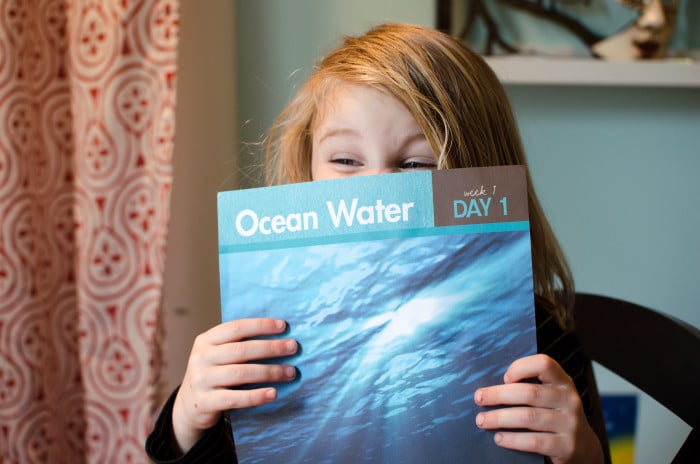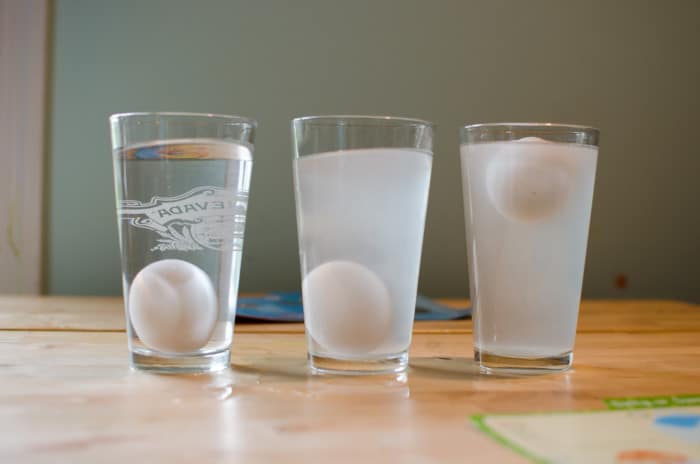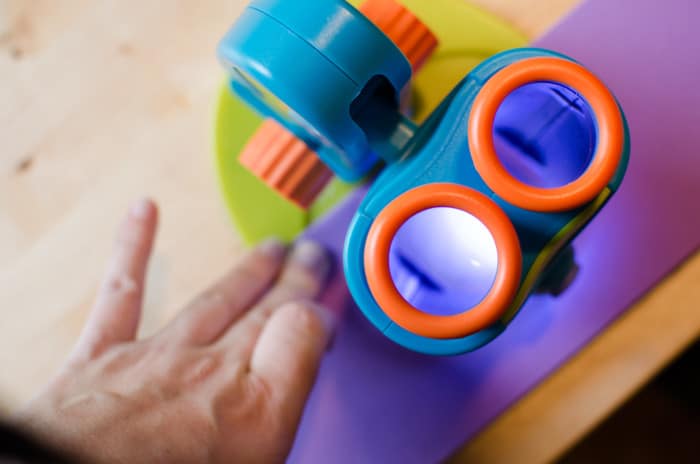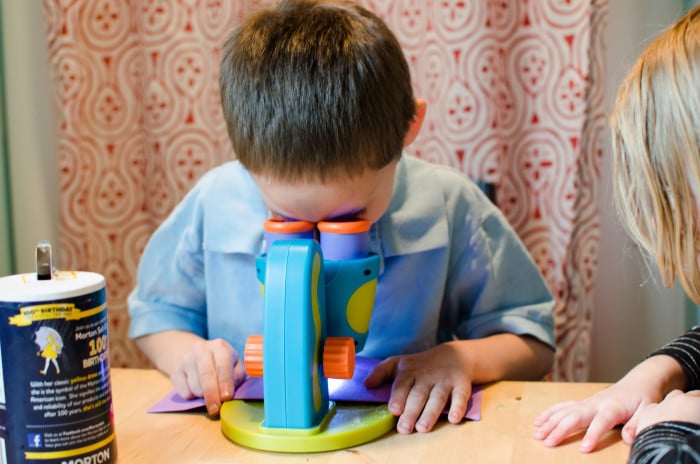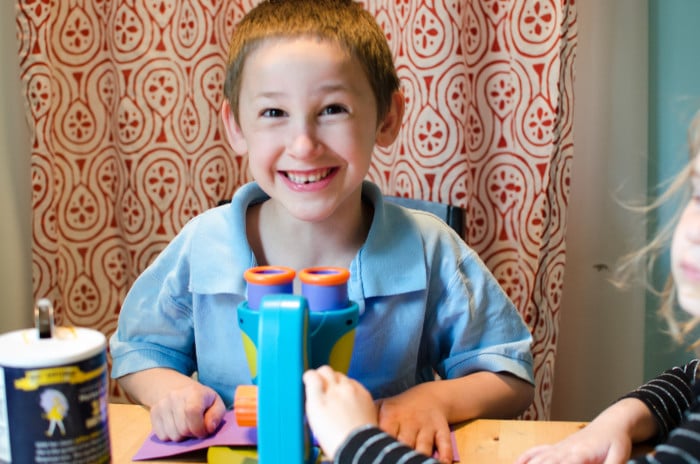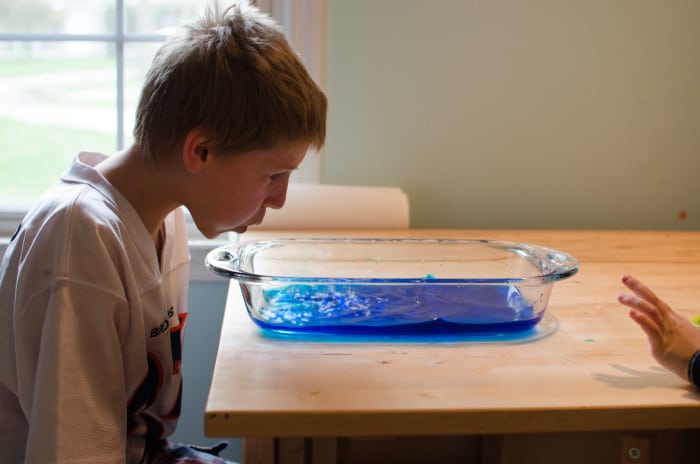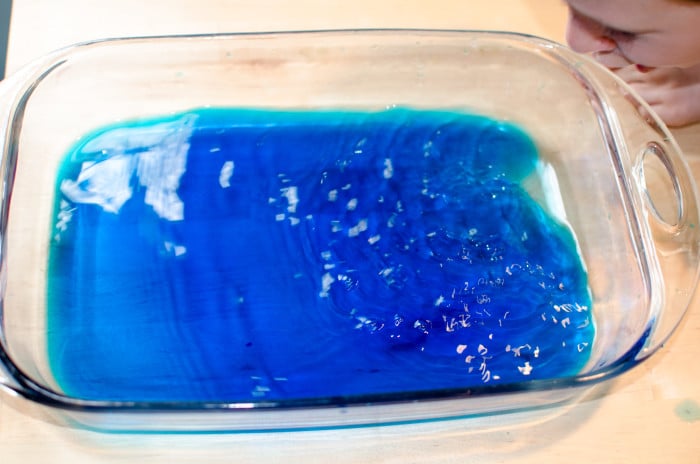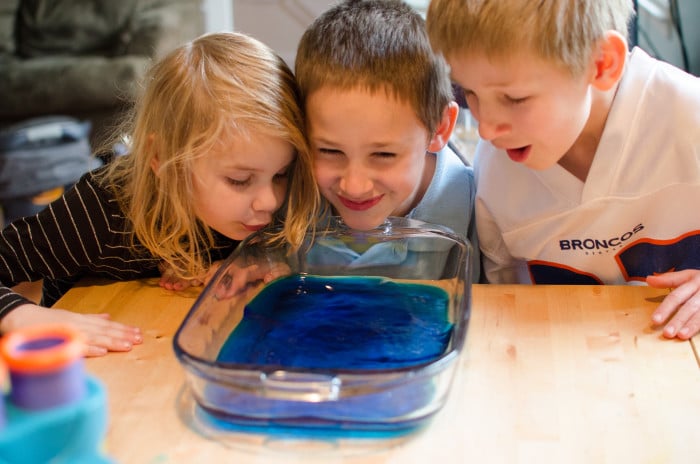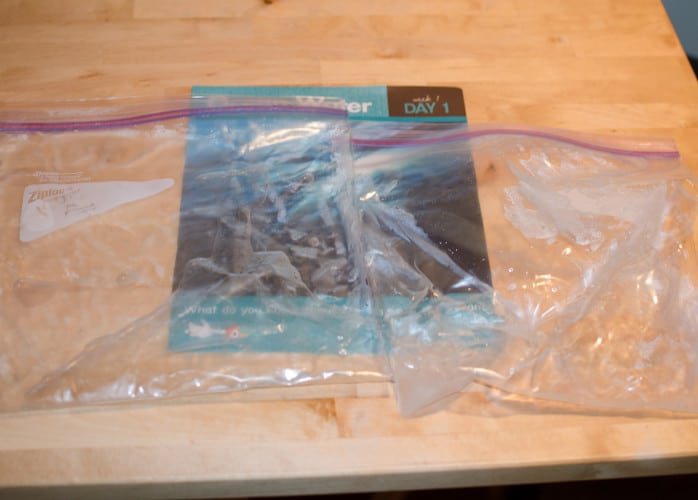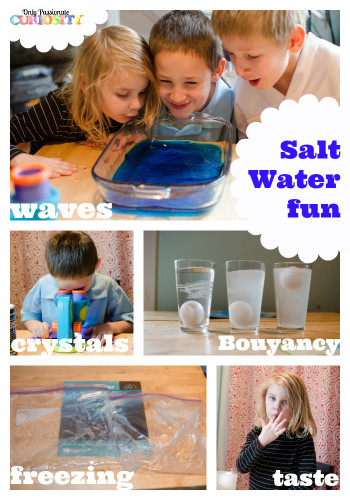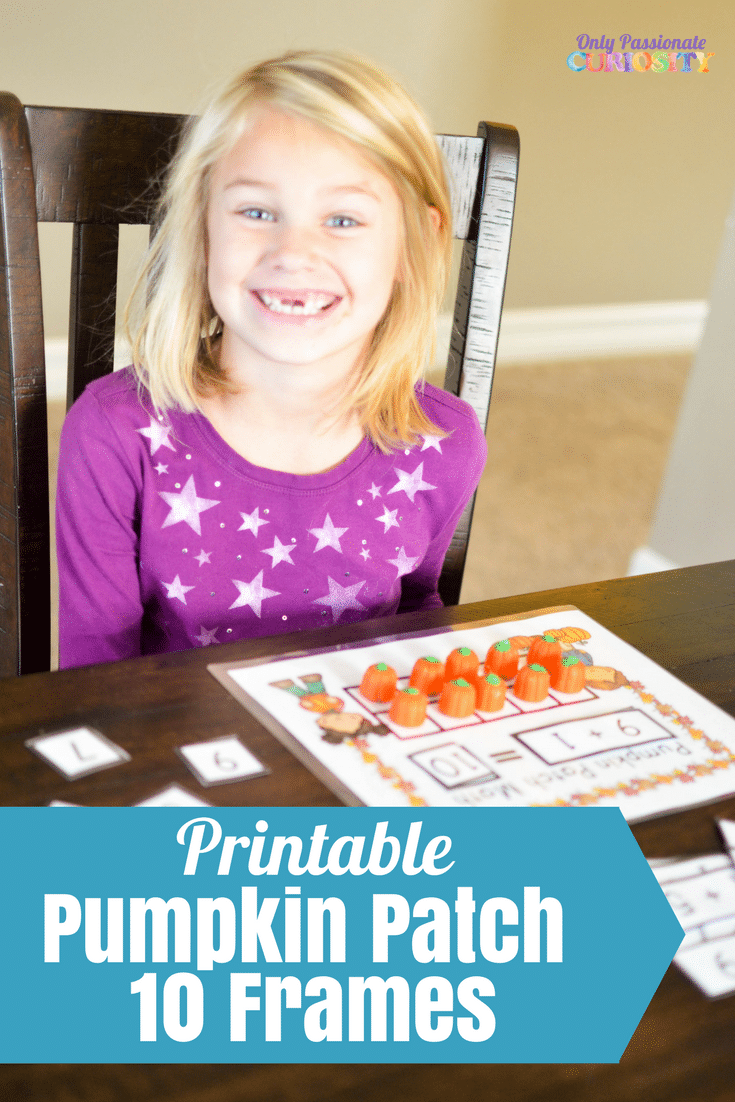Properties of Ocean Water
This month’s unit study with Mother Goose Time has been awesome. I love the ocean, and it makes me more than a little sad that my kids haven’t had the same childhood I had. Don’t get my wrong, my kids have been more than spoiled with world travel and getting to go to things like the White House Easter Egg Roll, but as of today, they haven’t had the chance to spend the whole summer at the beach, soaking up the sun and playing in the waves.
I still can close my eyes and remember the smell of the salt in the air and the feeling of warm sand under my palm and the sensation of just floating on the waves. I miss the ocean in a way I can’t even put in words. (sigh… I’ll stop here before I really get homesick. Four years is too long to not go home.)
Anyways… School today. School was all about the properties of ocean water.
We started with the very basics. I asked the kids what they already knew about the ocean. They knew it was big and blue and lots of fish lived there. Bug also chimed in that it was salty… and with that, we jumped into exploring salt water.
First, we mixed up three glasses of water. I measured all of them to be exactly a cup and a half of water, and then we added salt. The first glass had no salt, the second had 4 tablespoons, and the third had 10 tablespoons of salt. We then carefully added eggs to the water to test the buoyancy.
We talked about how the salt in the water can help things float. Salt water is denser than fresh water. Bug remembered that Daddy had been on a trip to the dead sea, and told the little kids that it is SO full of salt that nothing can live there, but you can float SO easily.
Mr. Man then wanted to know why the salt water looked white while the fresh water was perfectly clear, so we talked about the salt crystals and how they dissolve in the water, but not perfectly (which is why the water looked white). Then, he wanted to see the crystals up close (if you give a mouse a cookie…) so we brought out our kids microscope from Educational Insights to get a closer look at them.
Next, we experimented pretending to be the wind to see if we could make waves. I added food coloring to water, and put it in my pyrex dish, and let the kids take turns blowing on the surface to make waves. Strong winds cause waves on the surface of the water, which then causes currents underneath the surface. We also talked about how very strong winds, and earthquakes under the surface can cause HUGE waves that sometimes are dangerous.
Finally, we tested which would freeze faster, the salt water, or the fresh water. I poured both cups of water into freezer ziplocks and set them aside for a couple hours. The kids each had their guesses as to what would happen, and in the end, Bug was right! The salt water did not freeze like the fresh water did. He is now going to leave it in the freezer overnight to see if it will eventually freeze (he’s not sure it will- I have to let him test that hypothesis!).
This was a fantastic day of water experiments! I love when we can take the time to really explore a topic and let the kids lead the activities by asking questions. Give some of these activities a try with your own kids!



